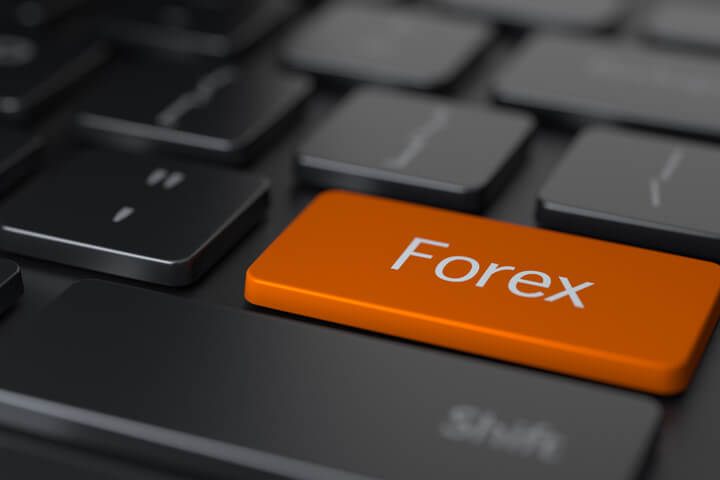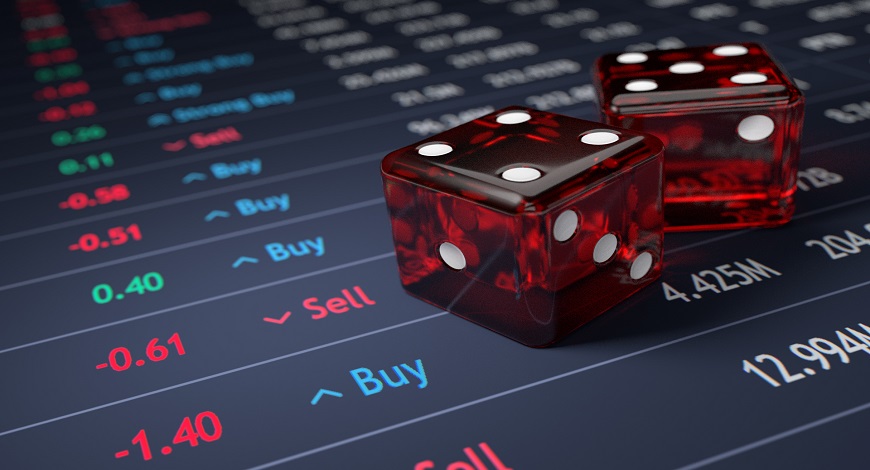The foreign exchange market, commonly known as forex or FX, is the largest and most liquid financial market in the world. With trillions of dollars changing hands every day, it’s a dynamic and global marketplace where currencies are bought and sold. While this may sound intimidating, understanding the fundamentals of forex trading is the first step toward exploring its potential. This article will provide an overview of what forex trading is, how it works, and key considerations for anyone looking to get started.

What is Forex Trading?
At its core, forex trading is the act of simultaneously buying one currency while selling another. This is done with the expectation that the value of the currency you bought will rise relative to the currency you sold, allowing you to profit from the exchange rate difference. Currencies are always traded in pairs, such as EUR/USD (Euro/U.S. Dollar) or GBP/JPY (British Pound/Japanese Yen). The first currency in the pair is the “base currency,” and the second is the “quote currency.” The price of the pair tells you how much of the quote currency is needed to buy one unit of the base currency.
The forex market is decentralized, meaning there is no single central exchange. Instead, it operates “over-the-counter” (OTC) through a global network of banks, brokers, and other financial institutions. This 24-hour nature (from Sunday evening to Friday night) allows traders from all over the world to participate at any time, making it a highly accessible market.
How to Start Trading Forex
For beginners, getting into forex trading requires a structured approach. Here’s a step-by-step guide to get you started:
Educate Yourself: Before risking any capital, it’s crucial to build a solid foundation of knowledge. Learn the key terminology (like pips, spreads, and leverage), understand market mechanics, and familiarize yourself with the economic factors that influence currency prices.
Choose a Reputable Broker: Your broker is your gateway to the market. Look for one that is regulated by a major financial authority, offers a user-friendly trading platform, and provides educational resources. Researching and reading reviews is essential to avoid fraudulent or unreliable brokers.
Open a Demo Account: A demo account is a risk-free way to practice trading with virtual money. It allows you to test out the broker’s platform, execute trades, and develop a strategy without any financial risk. This is an invaluable tool for beginners to gain experience and confidence.
Develop a Trading Plan: A well-defined plan is your roadmap to success. It should outline your financial goals, risk tolerance, and preferred trading strategies. Decide how much you are willing to risk per trade and stick to your plan, even when emotions run high.
Start with Major Currency Pairs: As a beginner, it’s wise to focus on major currency pairs like EUR/USD or USD/JPY. These pairs are highly liquid, meaning they are easier to buy and sell, and generally have lower spreads (the difference between the bid and ask price).
Use Risk Management Tools: Always use risk management tools like stop-loss and take-profit orders. A stop-loss order automatically closes a trade when it reaches a certain loss threshold, while a take-profit order closes it when a predetermined profit is reached. These tools are crucial for protecting your capital.
Key Analysis Techniques
Successful forex traders use various analysis techniques to make informed decisions. The three main types are:
Technical Analysis: This involves studying historical price charts and using indicators to predict future price movements. Traders who use this approach believe that all market information is already reflected in the price. Tools like moving averages, the Relative Strength Index (RSI), and chart patterns are used to identify trends and potential entry and exit points.
Fundamental Analysis: This method focuses on economic, social, and political factors that can affect currency values. Traders analyze economic data releases, such as GDP reports, interest rate decisions from central banks, and employment figures, to gauge a country’s economic health and predict how its currency might react.
Sentiment Analysis: This approach gauges the overall mood or sentiment of the market. It involves understanding whether traders are predominantly bullish (expecting prices to rise) or bearish (expecting prices to fall) on a particular currency pair. Tools like the Commitments of Traders (COT) report can help in this analysis.
The Risks of Forex Trading
While the potential for profit in forex trading is significant, it’s a high-risk endeavor. The most notable risks include:
Leverage Risk: Leverage allows traders to control large positions with a small amount of capital. While this can amplify profits, it can also magnify losses. A small market movement against your position can result in a significant loss, potentially exceeding your initial investment.
Market Volatility: Currency prices can change rapidly and unpredictably due to economic news, geopolitical events, or central bank policies. This volatility can lead to sudden losses if you’re not prepared.
Psychological Risk: The fast-paced nature of forex trading can lead to emotional decision-making, such as overtrading or chasing losses. Discipline and patience are crucial to mitigate this risk.
Understanding Forex Market Participants and Key Terminologies
The forex market is a vast ecosystem with a diverse range of participants, from large financial institutions to individual traders. Understanding who is moving the market and the specific terms they use is essential for any aspiring trader.
Who Trades Forex?
Major Banks: These are the largest players in the forex market. Banks like Deutsche Bank, JP Morgan, and UBS act as the primary market makers, providing liquidity and setting bid-ask spreads. They trade on behalf of their clients and for their own accounts, managing large-scale transactions.
Central Banks and Governments: Central banks, such as the U.S. Federal Reserve or the European Central Bank, use the forex market to implement monetary policy and stabilize their country’s currency. They might intervene by buying or selling their currency to influence its value against others.
Hedge Funds and Investment Managers: These entities trade large volumes of currency to speculate on price movements or to hedge their international investments. Their actions can have a significant impact on market volatility and trends.
Corporations: Businesses that operate internationally use the forex market to convert currencies for imports and exports, or to hedge against future exchange rate fluctuations that could impact their profitability.
Individual (Retail) Traders: This group includes anyone from small-scale investors to part-time traders who speculate on currency prices through online brokerage platforms. While they represent a smaller portion of the total market volume, their collective activity is a major part of the retail trading landscape.
Essential Forex Trading Terminology
When you start your trading journey, you’ll encounter a specific set of terms. Here are some of the most important ones to know:
Pip (Point in Percentage): This is the smallest unit of price movement in a currency pair. For most pairs, a pip is the fourth decimal place. For example, if the EUR/USD pair moves from 1.1250 to 1.1251, that is a one-pip movement.
Spread: This is the difference between the bid price (the price at which you can sell a currency) and the ask price (the price at which you can buy a currency). The spread is essentially the cost of a trade, and it’s how your broker makes money. A smaller spread is better for the trader.
Leverage: Leverage allows you to control a large amount of currency with a small amount of your own capital. For example, a 1:100 leverage ratio means you can control a $100,000 position with just $1,000 of your own money. While this can magnify profits, it also significantly increases the risk of losses.
Margin: The initial capital you must deposit with your broker to open and maintain a leveraged position is called the margin. It acts as collateral for the trade.
Lot: A lot is a standardized unit of currency in the forex market. A standard lot is 100,000 units of the base currency, a mini lot is 10,000, and a micro lot is 1,000. Many brokers also offer nano lots (100 units), which are excellent for beginners who want to trade with very small amounts of capital.
Long/Short: When you go long or are in a long position, you are buying a currency with the expectation that its value will rise. Conversely, when you go short or are in a short position, you are selling a currency with the expectation that its value will fall.
How to Stay Informed and What to Watch For
The forex market is heavily influenced by global economic events. Staying informed is critical for making educated trading decisions.
Economic Calendar: This is a trader’s best friend. An economic calendar lists scheduled news events and data releases that can impact currency prices, such as:
Interest Rate Decisions: Announcements from central banks (like the Fed or ECB) on whether they will raise, lower, or maintain interest rates. Higher interest rates typically attract foreign investment, increasing demand for a currency.
GDP (Gross Domestic Product) Reports: A measure of a country’s economic health. A strong GDP report can signal a healthy economy and potentially strengthen the currency.
Non-Farm Payrolls (NFP): This monthly report from the U.S. Bureau of Labor Statistics shows the number of people employed in the U.S., excluding farm workers. It’s one of the most closely watched economic indicators and can cause significant market volatility.
Geopolitical Events: Political instability, elections, trade wars, and military conflicts can all have a major impact on currency values as they introduce uncertainty and risk.
Market Sentiment: Sometimes, the market’s direction is driven not by hard data but by the collective mood of traders. Following news headlines and market analysis can help you gauge whether the market is feeling optimistic (bullish) or pessimistic (bearish).
Remember, forex trading is a continuous learning process. The more you understand the underlying forces at play and the tools of the trade, the better equipped you’ll be to navigate this dynamic market.
Conclusion
Forex trading can be a rewarding pursuit, but it’s not a get-rich-quick scheme. It requires education, discipline, and a deep understanding of the market. By starting with a solid educational foundation, using a demo account, and employing sound risk management practices, you can navigate the complexities of the forex market and build a foundation for a successful trading journey.


